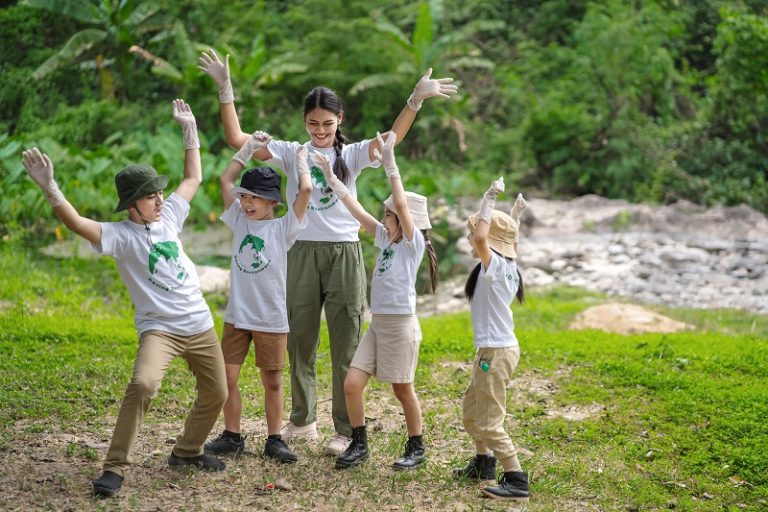As you prepare for the summer camp season, here are some tips to help you become more environmentally responsible and save money by reducing, reusing, and recycling! By following these simple tips, you can positively impact the environment, and bonus – keep costs down! So, whether you’re packing for your kids to head off to summer camp or not, please keep our environment in mind. With a little effort and some eco-friendly camp prep, we can all work towards a more sustainable future.
Give an old backpack new life.
Empty out your child’s trusty school backpack or dig out an extra one from a previous year. Pre-treat any unsightly spots with stain remover and run it through a cold-water cycle in your washing machine. Hang it outdoors in the sun to dry. Spruce up the zipper pull with a keychain-style accessory or a personalized bag tag. The backpack’s makeover is complete and it’s ready for camp time!  Choose eco-friendly lunch gear.
Choose eco-friendly lunch gear.
A reusable Bento style lunch box (made of plastic or stainless steel) is a positive step toward a litterless lunch. Send a daily personal message for your day camper with washaway lunch box notes that dissolve in water. Reusable single-serve containers and silicone snack bags are also a great alternative to disposable ones.
Say goodbye to single-use water bottles.
“Water” we waiting for? For the sake of the earth, it’s time to reduce the demand for new plastic. Keep your child hydrated all day with a high-quality reusable water bottle. Prevent germy mix-ups by adding a textured wraparound water bottle label personalized with your child’s name. And, if you’re worried about bacteria, we’ve got tips for cleaning and disinfecting.

Rediscover old-fashioned entertainment.
Your young camper may appreciate having something to do on the drive, at lunch break, during quiet time, or while waiting for pick-up. With this in mind, scour your game cupboard, bookshelf and toy bin for “unplugged” options such as:
- Art supplies. Sort through your existing collection of pens, crayons, markers and coloring pencils (this is a great hands-on project for kids!). Discard the unusable or broken ones, and fill a pencil case with the rest. Grab a past school notebook and remove any used pages to get a fresh start. Slip these into your child’s bag for drawing, writing letters or playing or pen-and-paper games with fellow campers.
- Travel games, magnet sets, fidget toys or a deck of cards
- Activity books, word puzzles, comic books or Mad Libs
- A long-forgotten stuffed animal – refresh it with a wash and dry cycle (inside a tied pillowcase) and your child will have a familiar friend for the car ride.
Seek out gently used gear.
This is especially wise if your child is registered for a camp where they’ll be trying a new sport or activity. Look for gently used sports equipment and footwear in online classifieds, at thrift stores, or through the local sport association. Also consider borrowing camp essentials like a sleeping bag or rain gear from your personal network of cousins, friends and neighbors.
Reuse products that are still within their shelf life.
Check your cabinets and assess your existing stock of kid-friendly sunscreen, bug spray and after-bite lotion. If it’s still ahead of its expiry date, squeeze out every last ounce before purchasing a new one.
Avoid over-buying.
Check the camp website or ask in advance if there is a camp supply list, so you know exactly what your child will need. For sleep-away camp, you can also use our handy checklist as a starting point.
By adopting an eco-friendly approach to camp gear, you’ll be helping both the planet and your budget. Repurposing existing items reduces landfill waste and saves money (that you’ll likely need for camp fees). Also, labeling everything reduces the chances of lost items, which means you won’t have to purchase new ones to replace them. So, be creative and apply “the 3 R’s” wherever you can!

